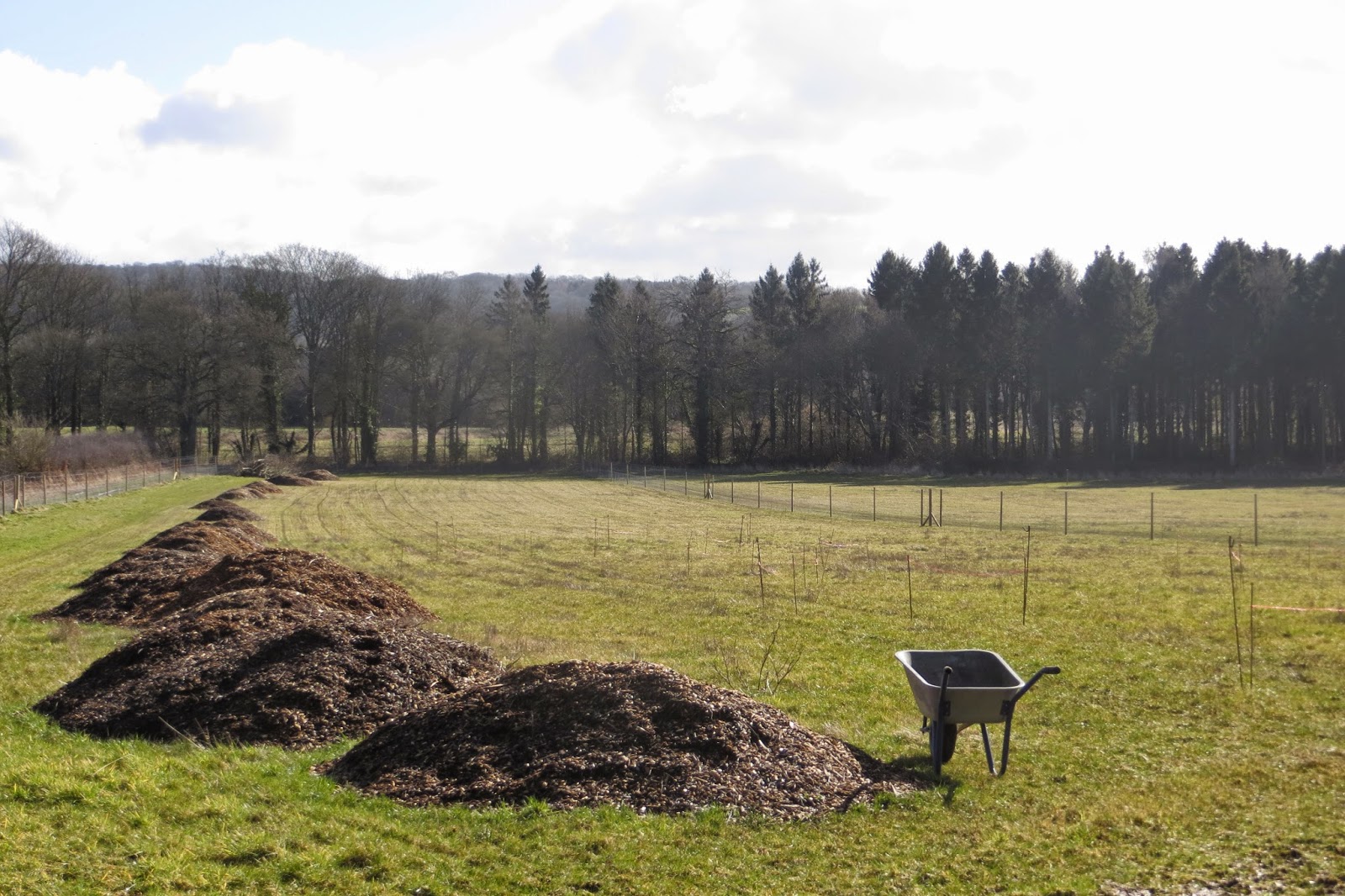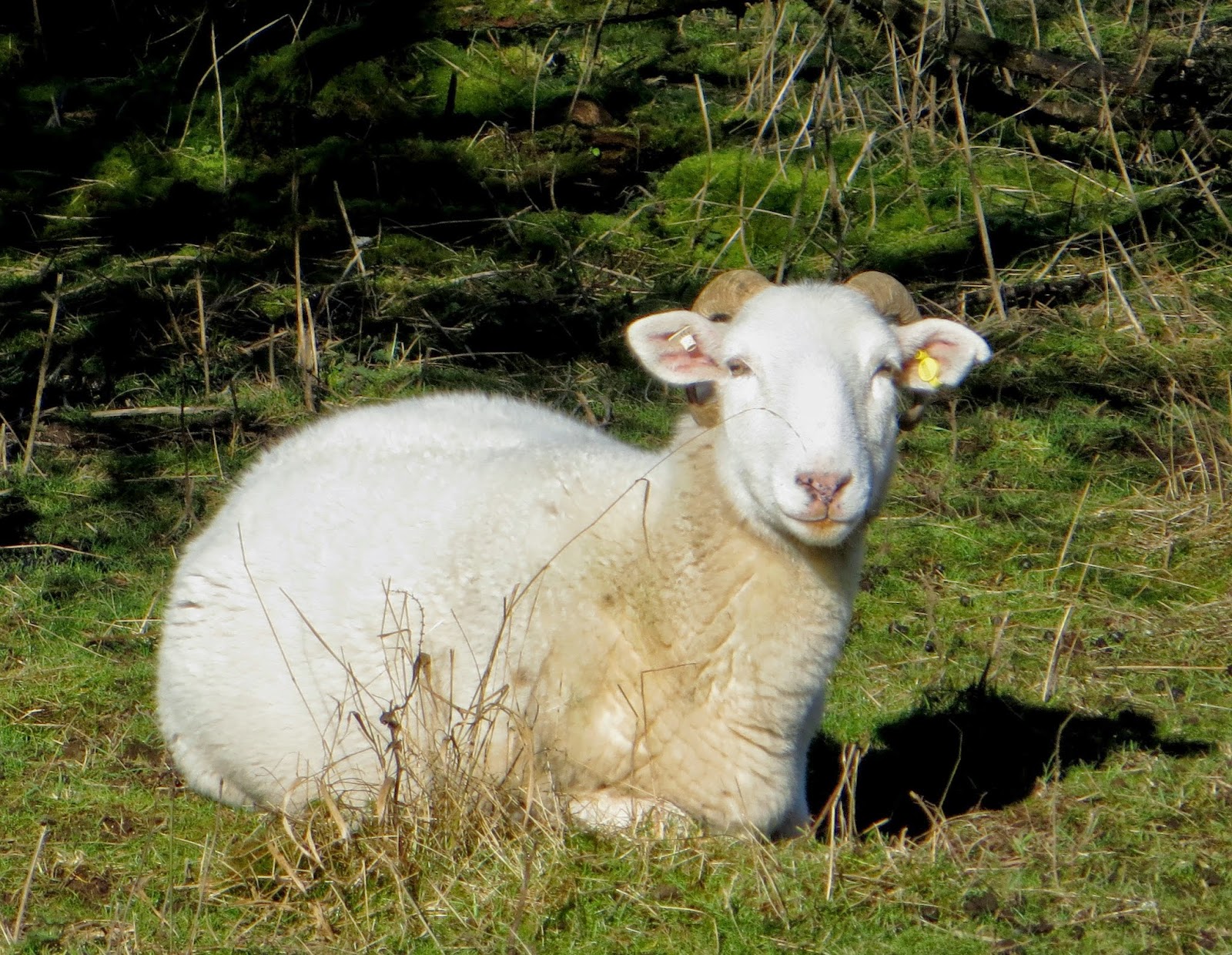All around us right now is the slow but sure dawning of
Spring, you can smell it on the breeze and feel it in the warmth of the sun and
best of all; you can see evidence of it just about anywhere you look. Wandering around our sites I have been
thriving on the blue skies and warm winds that have blessed us for the last
couple of weeks and the midge bites and freckles I have developed as a result
are definite proof of seasonal flux.
Walking through the Duck Grounds on my birthday recently I was
treated to my best ever sighting of a Kingfisher. Like a silent jewel it sat on a twiggy perch
gazing at the stream below it, its beady gimlet eyes watching for a tasty
snack. Normally I only see Kingfishers
as passing streaks of sapphire so to actually get to watch one sitting still
apparently oblivious of me was a treat indeed.
I also then spotted a Goldcrest hopping through the bramble and through
my binoculars I could see the bright gleaming yellow crest on its head that
makes this bird so distinctive. The
Goldcrest vies with the Firecrest for the title of the UK’s smallest bird, but
Firecrests are far less common than Goldcrests.
I also admired the newly opened Hazel flowers on the trees,
always a favourite Spring signal of mine; like a tiny fuchsia sea anemone,
these iddy biddy flowers poke out the top of Hazel buds and are the ‘female’
part of the plant, to the ‘male’ catkins.
Whilst admiring all this in the Duck Grounds, I also had the
added pleasure of Sparsholt students who were helping us to clear back the
overgrown glade areas in time for the end of scrub cutting season. These areas provide a good diversity within
the peaty woodland habitat here and wild flowers and butterflies will benefit
greatly from their re-opening.
Sparsholt have also been out on Stockbridge with me clearing
back Sycamore. Sycamore, like Birch, can
be an ever advancing army which self-seeds and proliferates across a site and
can take over and produce a very uniform, un-diverse one-type habitat if it is
allowed to get too far. Obviously I don’t
want Stockbridge Down, a chalk grassland and mixed scrub habitat site to become
taken over by Sycamore so we do clearance work to keep such species under
control. We had a great day in the sun
and they did a brilliant job of clearing a patch of Sycamore that has been
bugging me for a year or more. We shall
keep the regrowth sprayed with herbicide to kill it off completely and this
should keep the tide back.
It gives me a good deal of satisfaction to stand on the top
of Stockbridge Down, on the hillfort and look out across the site and be able
to see the differences we have made. I
can spot the Juniper down the far end which are now not encased in scrub but
stand out as the individual looking species that they are. I can see the grassy glades in among the
scrub areas which we keep open and which provide herb rich species for
invertebrates including of course, butterflies.
I can see the rotation scrub work regrowing and providing differing
habitat to the mature scrub. I can see
the sheep slope blooming green and fresh after they grazed it last year, and
see the flock scattered like woolly blobs on the new slope area that they
reside on this year. And above it all I can
always spot the fantastic array of avian life that thrives here; kestrels
hovering above the grassland, Red Kites wheeling on the thermals, Skylarks
trilling their beautiful twittering song that is so quintessential of English
countryside and, the other day, I was treated to an aerial acrobat display by
Buzzards. I stood on the top of the hill
and watched them fling themselves through the air, twisting and turning,
tucking in their wings and plummeting headfirst to earth like a suicidal bullet
before woooosh! They throw their wings out again and they are effortlessly borne
aloft, seconds from death by impact, to ‘dance the skies on laughter silvered
wings’ as the poem goes (High Flight, by John Gillespie Magee Jr, one of my
favourite poems). It was a warm sunny
day with light winds and so who could blame them for making the most of their
sky empire and rejoicing in the sun. I
felt rather land bound and heavy watching them and could only dream of what it
must feel like to soar and swoop in such a way.
Meanwhile, back at Mottisfont, Brimstones have been dancing
through the staff carpark having emerged from the Ivy in which they had tucked
down for the winter and their bright golden presence warms the cockles.
We are finishing the winter works and the estate has been
bustling with the last minute race to the finish line. In Oakley copse and Spearywell woods we have
had Harvester machines in, clear felling areas of softwood plantation which
will be sold as timber, leaving the woodland to regenerate broadleaf native
species. Harvesters are AMAZING. They are a huge machine which grabs a tree in
its transformer like claws and ziiiing! A blade has nipped out and cut the tree
at the base, detaching it from the roots. Then it turns it sideways and, using
a spikey rolling mechanism the tree is rolled through the claws and snedded
(side branches removed) in a few seconds whilst the blade ziiiing! -cross cuts
the trunk at the same time. In a matter
of seconds you have gone from a standing tree to a pile of logs – a process which
can take me about half an hour with a chainsaw, depending on how many side
branches there are to remove! I would
like to bid for a harvester of our own but I think we are talking in the region
of many tens of thousands of pounds, so I may have to start saving the pennies…
 |
And whilst we are doing all this felling in the last gasp of
winter, we are also planning for the future and creating life; tree
planting. As part of our Woodland Grant
Scheme we are planting up a section of land that runs round the back of our
Hazel coppice and was previously arable field.
The idea is that it will increase connectivity between woodlands and
provide a future Oak timber crop in years to come. I find there is something very satisfying and
therapeutic about planting a tree – perhaps because so much of our work
involves felling and clearing stuff, that to actually be putting something back
into the ground and nurturing it gives me a sense of wellbeing. Ryan has plotted and organised the tree
planting and using his nifty method of stakes and strings to mark the spacing,
both Monday and Thursday volunteers flung themselves into the task and did a
brilliant job. In two days we had
planted almost all of the Oak species (English and Sessile) and other species
are then to follow, including Holly, Hazel and Field Maple. The mulch which we piled round the base of
each tree comes from the brash we chipped from the coppice over the winter and
which will do a great job of blocking weeds from growing up round the bases of
the tree, as well as providing a nutrient filled mulch mat for the new tree to
feed off as it rots down.
 |
| End of day one |
Whilst we were
planting up, there was a cry of ‘Frog! Frog!’ and a minute later two of the volunteers
approached me, one of them with his hands clenched shut around something…not a
frog as it turned out (this illusion was swiftly dispelled when they saw fur)
but something that I had hoped to spot on our estate since I worked here….a
teeny tiny harvest mouse! It was most
opportune as I had remarked to my friend only a few days before as we walked
that field that it would be a perfect grassy verge for harvest mice in winter
and so I was proved correct only two days later. Harvest mice are our smallest UK mouse,
weighing only 3-4g and with a fully prehensile tail which they use like a fifth
limb to climb around in grasses and reeds.
In summer they frequent the reeds and grasses along ditches such as
those we have in Long Lash and then in winter they move back a bit to drier
ground. I have always wanted to find a
wild Harvest mouse as I love seeing things I haven’t found before and so I was
jumping for joy over this tiny ball of ginger fluff.
 |
| The tiny Harvest mouse |
 |
| Unfortunately wouldn't keep still for a good photo... |
Finally I shall leave you with this picture of a very
contented looking sheep, relaxing in the first warm sun of the year. In a few weeks’ time they will start shedding
their winter fleeces and we shall know that the warmer months have truly arrived.








No comments:
Post a Comment